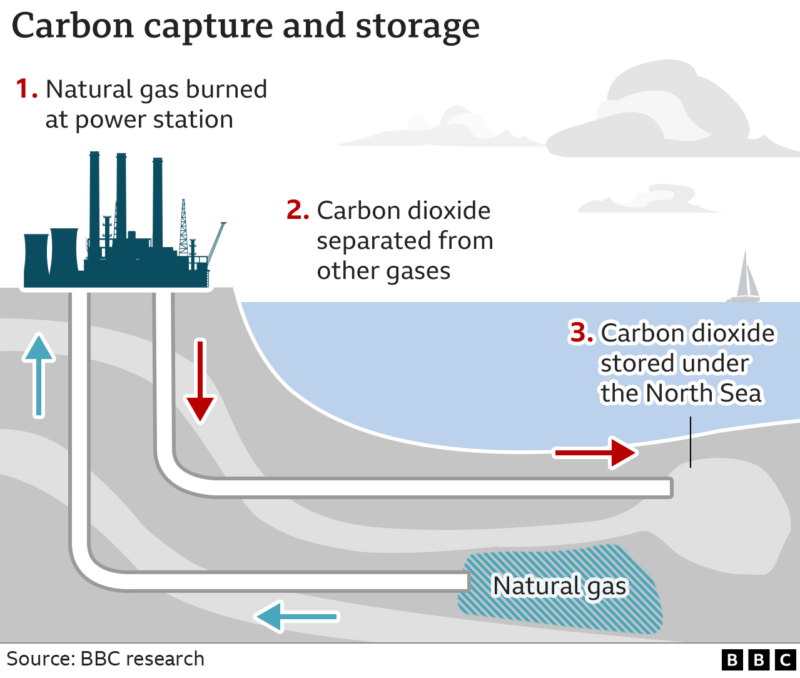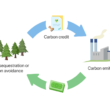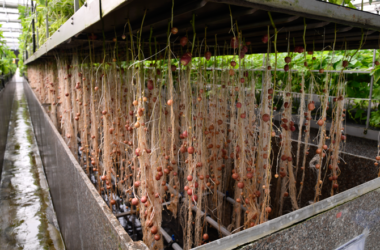Carbon capture and storage (CCS) is a technological solution aimed at reducing greenhouse gas emissions from power plants and other industrial processes. It involves capturing carbon dioxide (CO2) emissions before they are released into the atmosphere and storing them underground in geological formations. In this article, we’ll explore the science behind CCS, its benefits, challenges, and the future of this technology.
The Science Behind CCS
CCS is based on the principle that CO2 can be captured from the flue gas of a power plant or industrial process and then transported and stored underground. The process involves three main steps: capture, transport, and storage.
Types of CCS Technologies
There are three main types of CCS technologies: pre-combustion, post-combustion, and oxyfuel combustion.
Pre-combustion CCS
In pre-combustion CCS, fossil fuels are first converted into a mixture of hydrogen and CO2 before being burned. The CO2 is then captured and stored, while the hydrogen is used as a fuel.
Post-combustion CCS
In post-combustion CCS, the CO2 is captured from the flue gas after the fuel has been burned. This is typically done using a solvent that absorbs the CO2, which is then released and captured when the solvent is heated.
Oxyfuel Combustion CCS
In oxyfuel combustion CCS, the fuel is burned in pure oxygen instead of air, which produces a flue gas that is mostly CO2 and water. The CO2 can then be easily captured and stored.
Benefits of CCS
CCS offers several benefits, including reducing greenhouse gas emissions, enhancing oil recovery, and the potential for negative emissions.
Reducing Greenhouse Gas Emissions
The primary benefit of CCS is its ability to significantly reduce greenhouse gas emissions from power plants and industrial processes. By capturing and storing the CO2 emissions, CCS can help mitigate climate change and reduce our impact on the environment.
Enhanced Oil Recovery (EOR)
CCS can also be used for enhanced oil recovery (EOR), a process in which CO2 is injected into oil fields to increase oil production. The CO2 dissolves in the oil, making it easier to extract.
Potential for Negative Emissions
CCS also has the potential to achieve negative emissions when combined with bioenergy (BECCS). In this process, biomass is burned for energy, and the resulting CO2 emissions are captured and stored. Since the biomass absorbs CO2 as it grows, this can result in a net reduction in atmospheric CO2 levels.
Challenges and Concerns
While CCS offers many benefits, there are also several challenges and concerns that need to be addressed.
High Costs and Economic Viability
One of the main challenges of CCS is its high costs. The technology is still expensive, and its economic viability depends on factors such as carbon pricing and government incentives.
Public Perception and Acceptance
Public perception and acceptance are also important factors in the deployment of CCS. Concerns about the safety of underground storage and the potential for leaks need to be addressed to gain public support.
Environmental and Safety Concerns
There are also environmental and safety concerns related to CCS, including the potential for leaks, the impact on ecosystems, and the energy required for the capture and transport processes.
The Future of CCS
Despite these challenges, the future of CCS looks promising, with advancements in technology, policy and regulation, and integration with renewable energy.
Advancements in Technology
Research and development efforts are ongoing to improve the efficiency and reduce the costs of CCS technologies. Innovations such as solvent-free capture processes and advanced storage techniques are being explored to make CCS more viable.
Policy and Regulation
Governments around the world are implementing policies and regulations to incentivize the deployment of CCS. These include carbon pricing mechanisms, tax credits, and funding for research and development.
Integration with Renewable Energy
CCS can also be integrated with renewable energy sources, such as wind and solar, to create a more sustainable energy system. For example, CCS can be used to capture emissions from bioenergy plants, resulting in negative emissions.
Conclusion
In conclusion, CCS is a promising technology that offers significant potential for reducing greenhouse gas emissions and mitigating climate change. While there are challenges and concerns that need to be addressed, advancements in technology and supportive policies and regulations are making CCS more viable and accessible. As we move towards a more sustainable energy future, CCS will play a crucial role in achieving our climate goals.
Similar Articles
FAQs
What is Carbon Capture and Storage (CCS)?
CCS is a technology that captures carbon dioxide emissions from power plants and industrial processes and stores them underground in geological formations.
What are the benefits of CCS?
The benefits of CCS include reducing greenhouse gas emissions, enhancing oil recovery, and the potential for negative emissions.
What are the challenges of CCS?
The challenges of CCS include high costs, public perception and acceptance, and environmental and safety concerns.
How does CCS work?
CCS involves capturing carbon dioxide emissions from the flue gas of a power plant or industrial process, transporting the CO2, and storing it underground in geological formations.
What is the future of CCS?
The future of CCS looks promising, with advancements in technology, policy and regulation, and integration with renewable energy.










